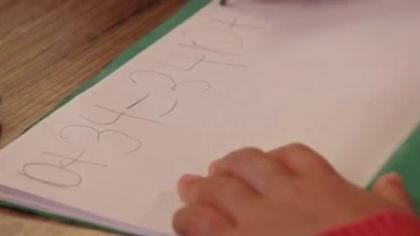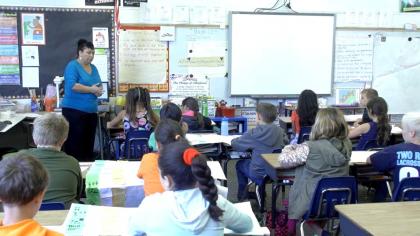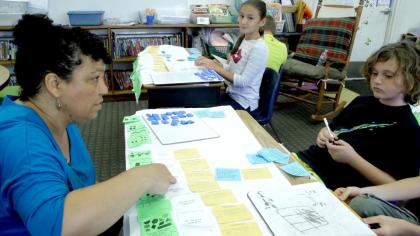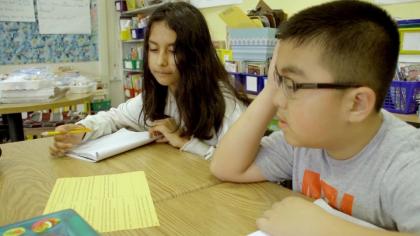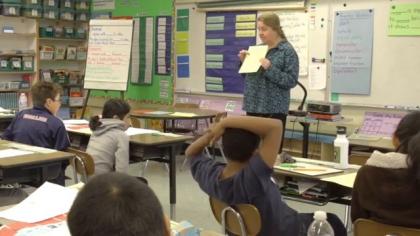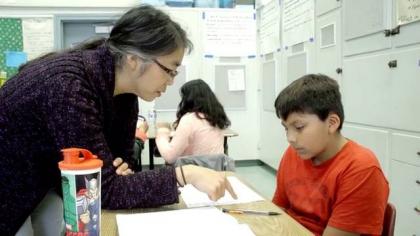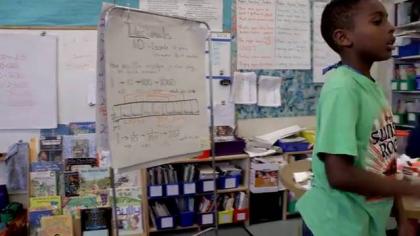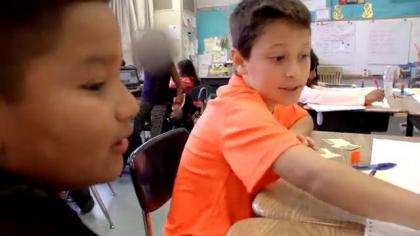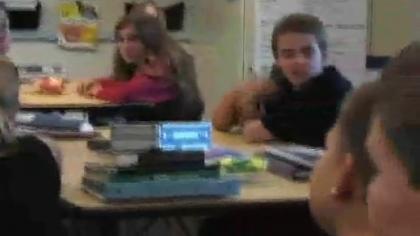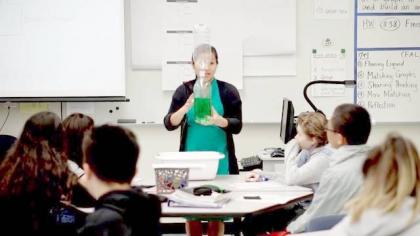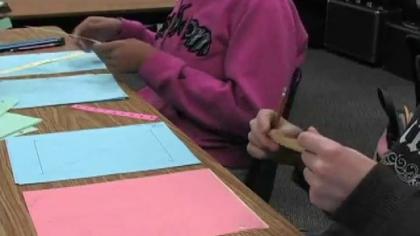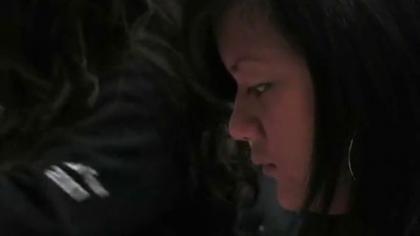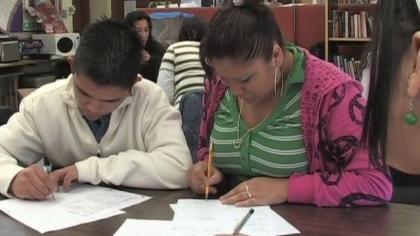Classroom Observations
Teachers who are developing students’ capacity to "look for and make use of structure" help learners identify and evaluate efficient strategies for solution. An early childhood teacher might help students identify why using "counting on" is preferable to counting each addend by one, or why multiplication or division can be preferable to repeated addition or subtraction. A middle childhood teacher might help his students discern patterns in a function table to "guess my rule." A teacher of adolescents and young adults might focus on exploring geometric processes through patterns and proof. Visit the video excerpts below to view multiple examples of teachers engaging students in identifying and making use of mathematical structure.
The Standard
Mathematically proficient students look closely to discern a pattern or structure. Young students, for example, might notice that three and seven more is the same amount as seven and three more, or they may sort a collection of shapes according to how many sides the shapes have. Later, students will see 7 × 8 equals the well remembered 7 × 5 + 7 × 3, in preparation for learning about the distributive property. In the expression x2 + 9x + 14, older students can see the 14 as 2 × 7 and the 9 as 2 + 7. They recognize the significance of an existing line in a geometric figure and can use the strategy of drawing an auxiliary line for solving problems. They also can step back for an overview and shift perspective. They can see complicated things, such as some algebraic expressions, as single objects or as being composed of several objects. For example, they can see 5 – 3(x – y)2 as 5 minus a positive number times a square and use that to realize that its value cannot be more than 5 for any real numbers x and y.
show more


